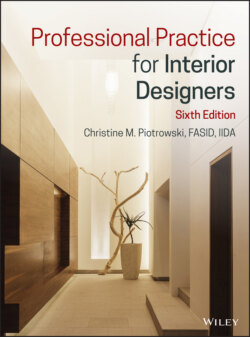Читать книгу Professional Practice for Interior Designers - Christine M. Piotrowski - Страница 144
THE COVER LETTER
ОглавлениеCover letters are a traditional part of the job‐hunt process. It should always accompany a resume whether the traditional paper variety or the online variety. Basically use the same tactics for either expression including using key words in your cover piece. Figure 6‐4 is an example of a cover letter appropriate in today's job market. This cover can then inform the recipient that a resume is attached. Ideally, if these items are to be sent electronically, it is best to convert the resume and cover letter to PDF format so that the recipient cannot make changes.
FIGURE 6‐4. A cover letter in which an individual is inquiring about a possible position at a firm. Note that this individual is seeking a job change from designer to design manager.
Your purpose is to get the receiver to read your resume and invite you to the office. The cover letter is an opportunity for you to introduce yourself. Hopefully, the employer will be so impressed by the cover letter that you will be invited for an interview.
It is important to do as much research on each firm as you can to try to make sure you will be a good match. You might also find interesting information about design firms from advertising and project layouts in magazines. You will want to determine who should receive the letter so that it can be personalized. If you are responding to a lead such as having met someone at a professional meeting or your advisor, be sure you have the information at hand to include.
It is vital that this letter be prepared using good business‐writing techniques, professional language, and perfect spelling. Keep the cover letter to one page for a printed version and about two short paragraphs for an online version. You want the employer to read your resume and not spend a lot of time with the cover itself.
Now let's look at the parts of a cover letter.
Begin by personalizing the letter. Try to find out a specific name of the person who would likely be doing the interviewing. You can research this via the company Web site. The “About Us” and “Contact Us” sections of Web sites will help you discover the name of the owner. A letter addressed to a specific person creates a better impression that one addressed to “Personnel Director” or “To whom it may concern.”
The first paragraph should attract attention by concisely stating the purpose of your letter. Write with enthusiasm and interest. Let the prospective employer know that you know something about the company and why you want to work there. It should include a statement about how you heard of the job you are applying for. Personalizing each letter makes it sound as if it were written only for that company.
The second and third paragraphs should contain specific information about the applicant's skills and interests in the position. Explain how your skills relate to the job that was advertised or otherwise meet the employer's needs.
The last paragraph should tell the prospective employer that you want an interview. Some experts refer to this as a call to action. You want the employer to call you, but do not wait for the employer to respond. The last paragraph should include a reference to the enclosed resume as well as the availability of your portfolio for review. It should tell the prospective employer that you want an interview.Mention a few of your skills or accomplishments, as well as how these relate to the employer's needs. But don't summarize your resume. Accomplishments, such as sales records and management experience, are important items for experienced designers to include. Students should point out the skills in which they are particularly proficient related to coursework or internship experiences.
Finally, thank the employer for taking the time to review the letter and resume. Use standard business style for the closing including the use of the word Enclosure if you are attaching or including a resume. Table 6‐2 provides several tips for preparing a cover letter.
You want the employer to call you, but do not wait for the employer to respond. It is often recommended that you state you will be calling the employer concerning an appointment for an interview. This naturally is very important if you have decided to travel to a location for your job search. It is not a good idea to expect the employer to meet with you when you are ready. The last paragraph should include a reference to the enclosed resume as well as the availability of your portfolio for review.
TABLE 6‐2. Tips for preparing a cover letter
| • Address the letter by the employer's name—never “To Whom It May Concern.” |
| • When you can drop names, do so: “I was referred to your company by John Jones, the owner of Jones Thompson Flooring.” |
| • Discuss accomplishments and results. This goes for the resume as well. |
| • Be brief and concise. Use good grammar and correct spelling. |
| • It is okay to use industry jargon and buzzwords. However, you had better know what any jargon you put in your letter means. |
| • Do not include negative information (such as “I left ABC Interiors because of a disagreement with the owner”). This might come up in the interview, but you will have a better chance of explaining it then. |
| • Do not make your letter sound like you are begging for a job. |
| • Always say thank you at the end. |
